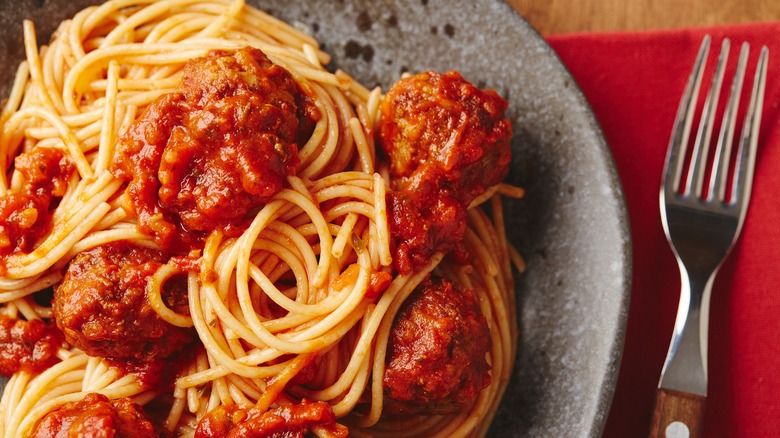How Meatballs Might Have Originated From Persian Cooking
Varieties of meatballs are found all over the world. Serious Eats describes a plethora of variations, from Chinese lion's head meatballs to Swedish Köttbullar. It's understandable that so many different kinds of meatballs have developed over the centuries: After all, small balls of ground meat seasoned with spices are pretty straightforward. As 19th-century Italian cookbook author, Pellegrino Artusi wrote, as per Smithsonian Magazine, "Don't think I'm pretentious enough to teach you how to make meatballs. This is a dish that everybody can make, starting with the donkey."
Despite the dish's simplicity, historians trace the modern meatball back to a specific ancient delicacy — and it's not from Italy. Like many Italian delicacies, including pasta and ice cream, meatballs likely originated farther east. The Atlantic writes that the earliest mentions of a meatball-like dish appear in early Arabic cookbooks but they got there by way of the Persians. The dish described in these ancient cookbooks still exists today in the form of the "kofta:" balls of ground lamb mixed with spices and egg.
The transformation of the meatball
Meatballs traveled from the Middle East to Europe via various trade routes, and on to the Roman Empire. Roman cookbook authors described early iterations of meatballs, which would become a staple in Southern Italy, as the South Florida Reporter notes. However, Italian meatballs bear little resemblance to the meatballs found in American restaurants. The Auguste Escoffier School of Culinary Arts explains that authentic Italian meatballs, called "polpettes," are smaller than their American counterparts and typically served without sauce.
Smithsonian Magazine writes that once Italian immigrants began to move to the United States in the late 19th and early 20th centuries, the traditional Italian meatball began to undergo significant change. These immigrants ate food shaped by their home country's cuisine — and by what was readily available in America. The seasonings and breadcrumb fillings used in meatballs proved to be a great way to cover the taste of sub-par meat, and red marinara sauces became the norm due to the abundance of tomatoes in America.
In fact, when Sicilian restaurateur Niccoló de Quattrociocchi visited America in 1950, he described spaghetti and meatballs as "traditional American." However, he enjoyed the dish — and stated that he wished it would catch on in Italy.

